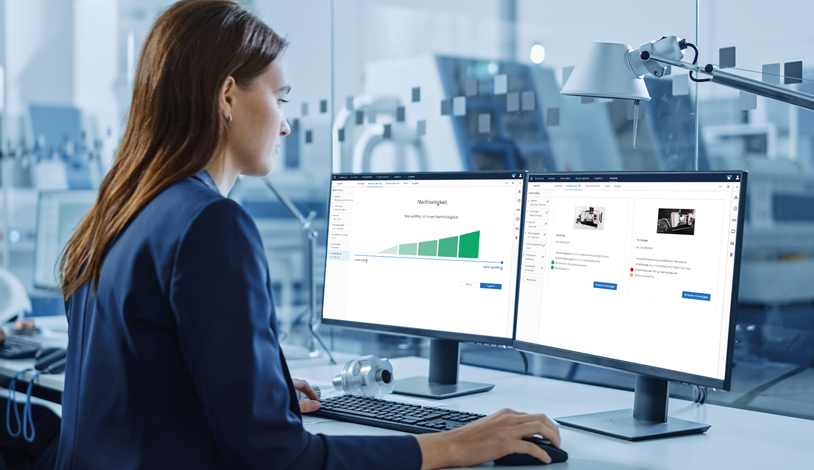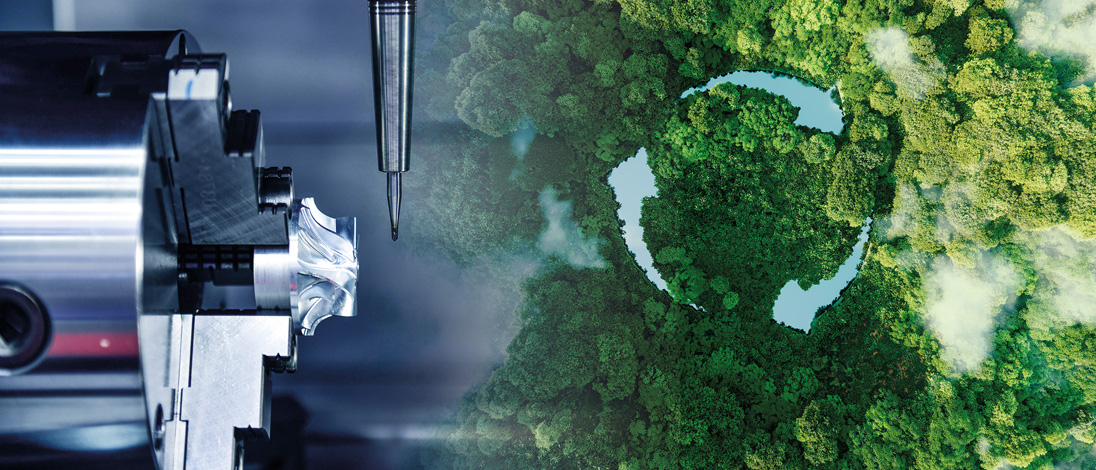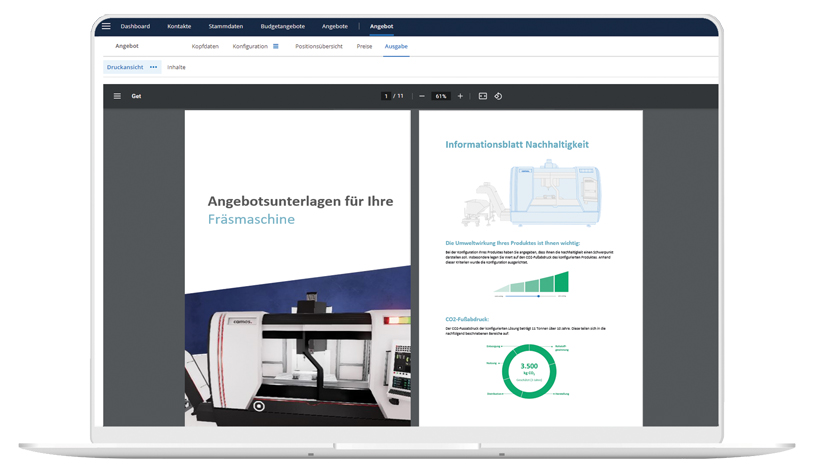Make sustainable decisions with CPQ
New opportunities through sustainability
Ecological sustainability is becoming a criterion for purchases. Even with technically complex and varied products such as machines or systems, customers are increasingly choosing products and brands that make a contribution to climate protection. According to a study by Capgemini, more than 80% of companies that invest in sustainable initiatives benefit from an improved brand image and gains in efficiency and productivity.
Product configuration as a starting point
When it comes to achieving CO2 savings and reaching sustainability goals with digital technologies, many companies first think of increasing automation in production. According to the Bitkom study “Climate Effects of Digitisation”, companies want to save 31 million tonnes of CO2 by 2030 this way. But companies that limit their sustainability approach to the manufacturing process are overlooking the greatest potential. The use of a product accounts for 80% of its total life cycle assessment. That is why products have to be configured together with the customer in such a way that they have a high degree of sustainability over their entire life cycle – from production and operation to disposal.
Measuring sustainability
The focal points for quantifying sustainability can be very company- and product-specific. The CO2 and the H2O footprint only take one environmental impact into account. Only statements about the contribution to the greenhouse effect or water consumption can be made on this basis. In contrast, the ecological balance (Life Cycle Assessment) considers all environmental effects of the product that can occur over all phases of the product life cycle. All potential harmful effects on soil, air, water and all material flows associated with the product are taken into account here. The material flows include the use of raw materials, emissions from supply and disposal processes, from energy production and from transport. A central problem in the creation of life cycle assessments is the often limited availability of the data. Environmental data on products and processes is often not public or only accessible through laborious research. But there are indications that this will change in future because of sustainability-oriented legislation.
Saving resources with CPQ
With CPQ software, technically complex products are configured according to customer needs (Configure), prices are reliably calculated (Price) and personalised offers are created (Quote). The software ensures that only what customers actually need is sold and produced. So no mass-produced products are left unsold in the warehouse. An integrated plausibility and completeness check also guarantees that the configured product variants are technically feasible. This minimises errors and saves time, energy and resources in the production process.

Finding the most sustainable product
The entire sales process can be aligned with sustainability criteria using CPQ software. This is achieved by the software suggesting products that fit the customer’s application and at the same time have a high degree of sustainability. For example, the CPQ specialist camos integrates ecological sustainability into a guided selling process. “Guided selling” means that the user is guided step by step through the offer process based on questions about the use case. A dialogue is created that makes it clear why the proposed product is suitable for the customer’s application. camos enables manufacturers to integrate questions about the relevance of sustainability aspects into this dialogue and to adjust the classification of the products in such a way that they carry particular weight in the product recommendation. As a result, the products that meet the customer requirements are presented with a summary of the most important sustainability information.

Configuring sustainably
With customisable offers, the buying process does not simply stop once a suitable product has been found. The next step is to express this in detail. The path to an individual customer solution leads in this sense from the requirement to the product (guided selling) and from the product to the individual variant (product configuration). CPQ solutions can also keep sustainability in focus when configuring the product by showing the user the ecological consequences of every configuration decision. For example, the camos CPQ software enriches the selection options with additional sustainability information. If the user has focused on CO2 emissions in the guided selling process, the resulting CO2 emissions are displayed for each option during configuration and the most environmentally friendly alternatives are highlighted with visual elements.
Increasing sales through sustainability information
CPQ systems not only lead users to the most sustainable product variant, but also present the positive effects of the product on the environment in the offer. For example, sustainability information such as the CO2 footprint is illustrated in diagrams, or calculated investment costs are compared with savings that can be realised in the long term through greater energy efficiency. This information on the environmental impact is increasingly becoming a decisive sales argument and will make a significant contribution to increasing sales in future.
Whitepaper: Future of B2B Sales
In this free whitepaper you will learn:
1. How purchasing behavior for industrial products is changing.
2. What the key challenges for the digitalisation of B2B sales are.
3. How these challenges can be solved with CPQ.
You will be introduced to the fields of action for the digitalisation of B2B sales:
1. Provide relevant information at the right time.
2. Convince emotionally in a digital environment.
3. Ensure a consistent user experience across all channels.
4. Achieve a competitive advantage with short reaction times.

